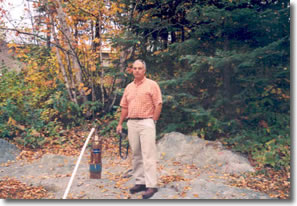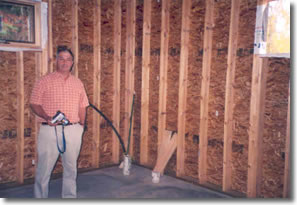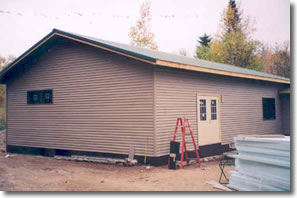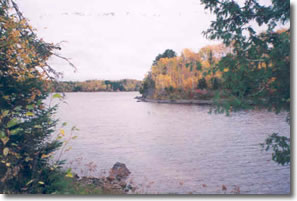Drinking Water Protection
- Drinking Water Protection Home
- About Us
- A-Z Index of Contaminants in Water
- Community Public Water Supply
- Drinking Water Grants and Loans
- Drinking Water Institute
- Drinking Water in Schools and Child Cares
- Drinking Water Revolving Fund
- Laws and Rules
- Noncommunity Public Water Supply
- Source Water Protection
- Water Operator and Certification Training
- Drinking Water Protection Contacts
Related Topics
- Annual Reports
- Drinking Water Risk Communication Toolkit
- Drinking Water Protection External Resources
- Fact Sheets
- Forms
- Invisible Heroes Videos: Minnesota's Drinking Water Providers
- Noncom Notes Newsletter
- Sample Collection Procedures (videos, pictures, written instructions)
- Waterline Newsletter
Related Sites
- 10 States Standards
- Clean Water Fund
- Health Risk Assessment – Guidance Values and Standards for Water
- Minnesota Well Index
- Water and Health
- Wells and Borings
Environmental Health Division
SWAMP Provides Training, Networking Experiences in Unique Setting
From the Spring 2006 Waterline
Quarterly Newsletter of the Minnesota Department of Health Public Water Supply Unit, Waterline
A complete list of feature stories can be found on the Waterline webpage.
 |
 |
| “The SWAMP is a legacy that will go on long past the time the grant is gone,” says Steve Kleist, standing by the well (left) and in the under-construction specialized classroom building (right). Kleist calls the program, “An opportunity to help a lot of people.” | |
"Our biggest obstacle has been convincing people that 'free’ really means free," says Steve Kleist of Vermilion Community College's (VCC) small-system water training near its campus in Ely.
Kleist has been with the college since it began its water-wastewater technology program in the mid 1970s. A former operator who had worked in the environmental field in other capacities, Kleist has taught courses on water quality and watershed science and is now a key part of the SWAMP program (an acronym for Safe Water for All Minnesota People).
SWAMP began as a result of money from the U. S. Environmental Protection Agency to state primacy agencies to assist with the training of operators from small water systems. An advisory committee developed a curriculum for the program; unlike the water technology courses at VCC, it was not geared toward a degree but rather for specialized training for existing operators as well as those just entering the profession. "Having lots of rural, surface, and small systems in northern Minnesota, it was a perfect fit," said Kleist. "Our students come from small communities, resorts, campgrounds, rural schools, trailer parks, and other water systems that benefit from those grant dollars."
Beyond the curriculum was the need for a facility. "In addition to the college, one of the things we wanted was a place available anytime of the year that small-water students to go to," added Kleist. That place is the Outdoor Learning Center (OLC), which is approximately five miles northeast of Ely. Formerly a resort and now owned by the U. S. Forestry Service, the OLC is on Fall Lake, which is partially in the Boundary Waters Canoe Area. The OLC has been in operation for a number of years and has eight cabins (with enough room to handle the maximum of 20 students per class), a food service, and waterfront access.
An existing generic classroom at the OLC has been used for water courses as well as other kinds of skills training, such as law enforcement. But with the new training came a specialized classroom, added onto the existing building, that is a hands-on treatment facility. Begun in mid-2005 and completed by the end of the year, the classroom has a groundwater and a surface-water source as well as a place to do lab work, water testing, and operations training. The groundwater is provided by a 285-foot-deep well outside the classroom building, and the surface water from Fall Lake. Kleist says that the water from the lake is hard and colored, providing treatment challenges in the classroom process demonstration.
With a faculty of a dozen experts from around the state, SWAMP courses were first offered in 2004 in the generic classroom with topics that include groundwater, surface water, general operations, lab testing, wells and well maintenance, and pipes, pumps, and plumbing. Employees of public water systems that serve fewer than 3,300 people are eligible for up to four free two-day classes (as well as free food and lodging) as long as the grant money lasts.
Kleist notes the opportunities afforded by the unique setting of a remote complex, pointing out that students network as well as learn by spending time together during and after the classroom sessions. Activities such as cookouts and lake excursions are a normal part of the experience. "Fishing might be the excuse," he says, "but it doesn’t take very long and pretty soon people are talking shop. There’s certainly a wealth of information to be learned in classes, but making those other professional connections, sharing perspectives, sharing solutions is as much of a learning opportunity as sitting in a classroom."
 |
 |
| The specialized classroom (left) was built in the latter half of 2005. SWAMP training takes place on Fall Lake (right) outside of Ely. | |